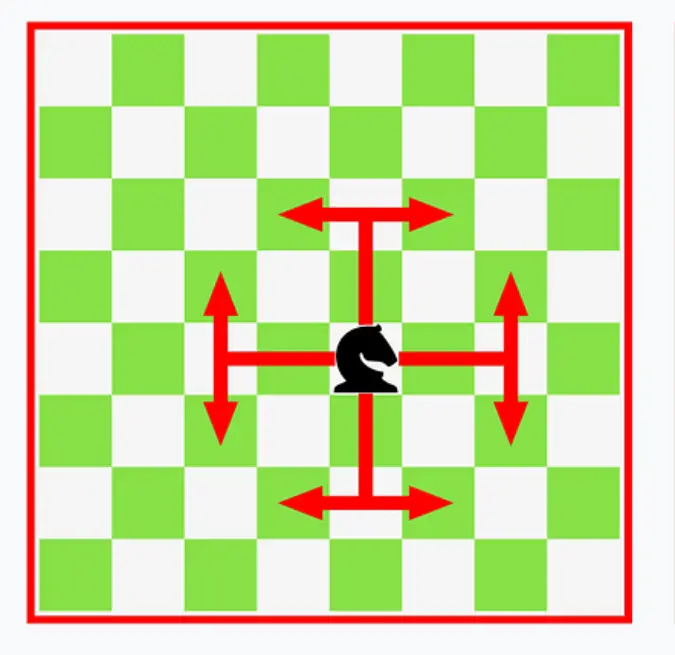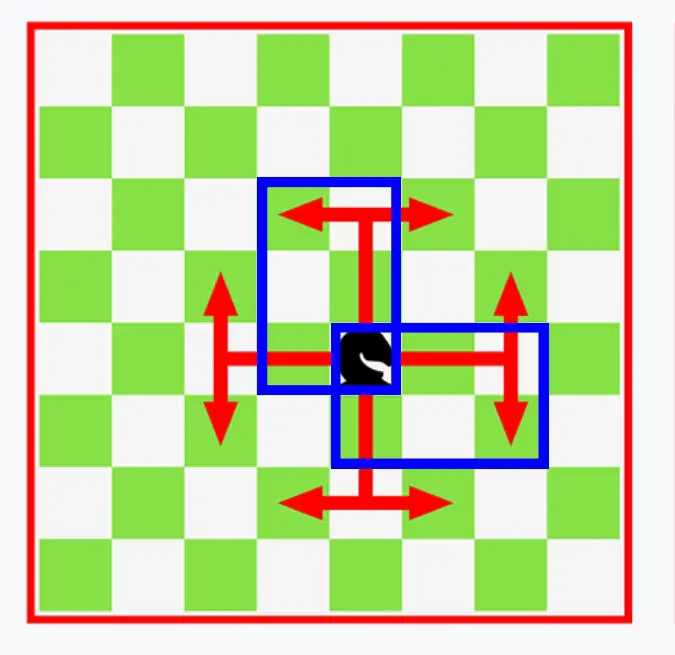The horse (knight) is possibly the most confusing piece for those new to chess. If the board is set up and you’re ready to go but are a bit uncertain about the knight, this article will have your knights jumping around in no time.
The knight’s movement isn’t as straight forward as the other pieces. Instead of some kind of straight line, it moves in a pattern. Fortunately, it’s not complex, and you’ll soon start seeing the pattern all over the board.
How Does the Horse Move In Chess?
The horse moves in a 3 block “L” shape. Here’s what it looks like:

The pictured knight can land on any of the squares with an arrow pointing at it. Assuming a knight isn’t near the edge of the board, it can reach 8 different squares—2 above, 2 below, 2 to the right and 2 to the left. Notice that the knight always lands on a square the opposite color of where it started.
Can you see the “L” shaped pattern? T o reach its final square, the horse moves 2 squares in a straight line—up, down, right or left—and then 1 square directly to the side, which can also be up, down, right or left depending on how the move started.
Another way of thinking of the knight’s movement pattern is as a group of 6 squares. The horse moves from one corner of a 6 square block to the diagonally opposite corner. Here’s a visual:

The blue box on top has 6 squares inside it. The horse is in the lower right corner of the box, so it will land on the upper left corner of the box. If this upper box was moved 1 square to the right, the knight would be in the lower left corner, so it will land on the upper right corner of the box.
The box on the right side shows this same 6 block pattern in another direction. The knight moves from one corner to the other one, diagonally.
8 different boxes like this can be pictured around the horse and its landing square. If this box explanation just confuses you more, feel free to ignore it. Just focus on the 3 block “L” shape.
Here are some things to remember about the horse or knight:
- They only move in a 3 block “L” pattern.
- They can move forward, backward, left or right.
- It doesn’t matter if there are pieces on the squares in between the starting square and landing square—it effectively jumps them all.
- They can capture any enemy piece (except for the king, which no piece can capture).
- They can put the king in check or checkmate.
I hope this cleared up any confusion you had about how the horse moves in chess.